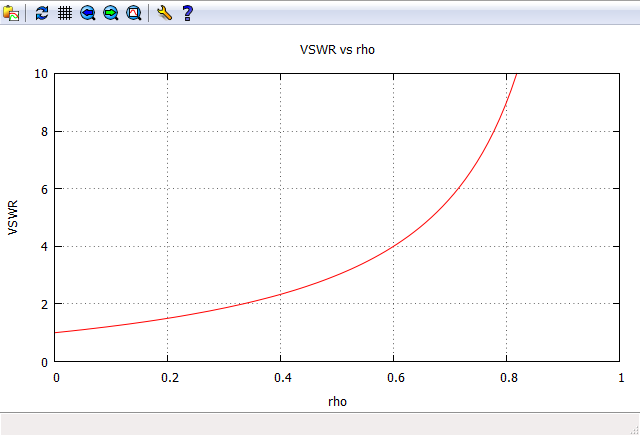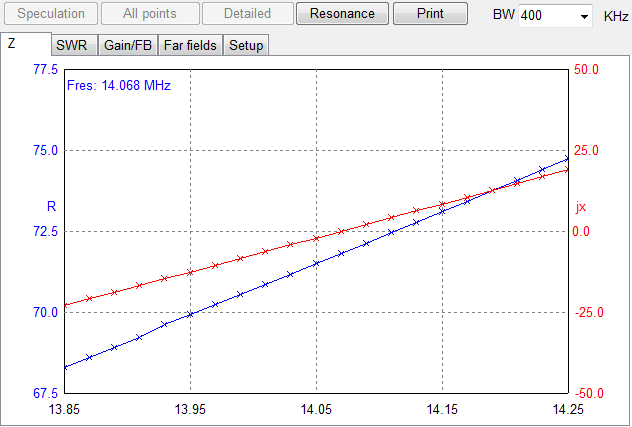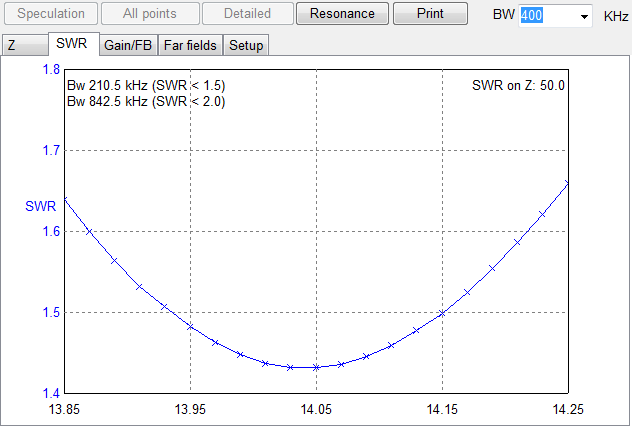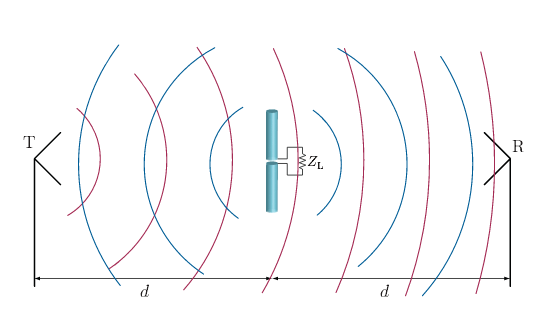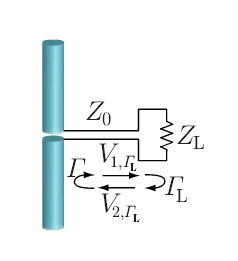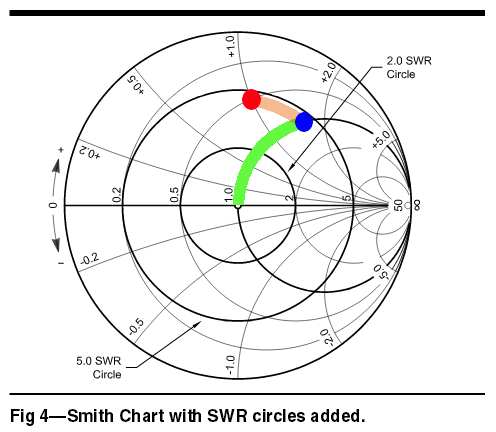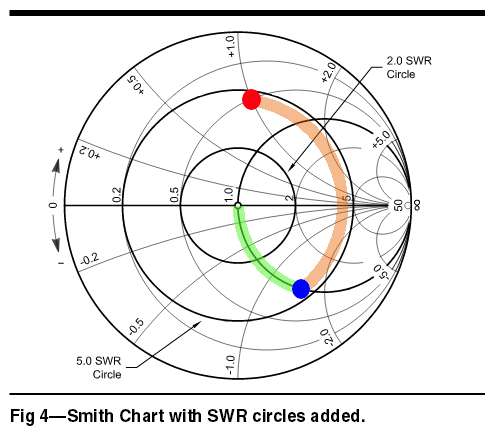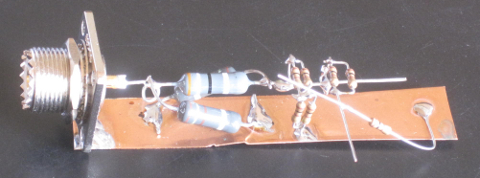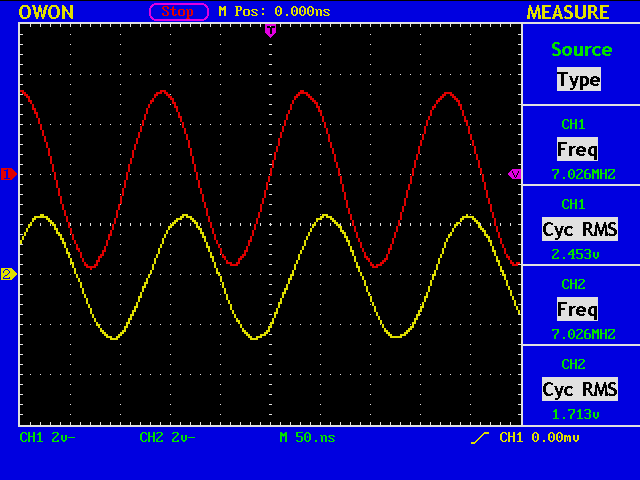
Now, let’s try again with another DUT.

This time there is a phase difference, so we must determine complex impedance in the form Z = R + jX.

The voltage ratio is: V2/V1 = 1.713 [v] / 2.453 [v] = 0.698, and the phase difference is: 360.0 [deg] * (-22.80 [nS] / 142.32 [nS]) = -57.7 [deg], where 142.32 [nS] is the period for 7026kHz.
Assuming you know the answer that the DUT is 100 [ohm] // 1 [nF], the voltage ratio and the phase are obtained in the following manner. (This is a reverse way.)
(%i1) r6:50;
(%i2) r:100; <- here is your 100 [ohm]
(%i3) x:1/(%i*2*%pi*7026e3*1e-9); <- here is your 1 [nF]
(%i4) z:r*x/(r+x);
(%i5) v2:z/(z+r6);
(%i6) float(2*abs(v2));
(%o6) 0.74942127142784 <- voltage ratio
(%i7) float(carg(v2)*360/(2*%pi));
(%o7) -55.80120705365476 <- phase difference
In most cases you do not the answer in advance, so you must go like this:
(%i1) t:(-57.7/360.0)*2.0*3.16; <- measured phase difference
(%i2) v:0.698/2.0; <- measured voltage ratio
(%i3) r:50.0;
(%i4) float(solve([(R*(r+R)+X^2)/((r+R)^2+X^2)=v*cos(t),r*X/((r+R)^2+X^2)=v*sin(t)],[R,X]));
(%o4) [[R=-50.0,X=0.0],[R=4.183382859001799,X=-19.67880950916058]]
(%i5) Z:4.1833-19.6788*%i;
(%i6) Y:1/Z;
(%i7) 1/realpart(Y);
(%o7) 96.75499446131043 <- Real part of Z (nominal 100 [ohm])
(%i8) 1/imagpart(Y);
(%o8) 20.56808181037462 <- Imaginary part of Z
(%i9) C:1/(2.0*3.1416*7026e3*1/imagpart(Y)); <- convert to capacitance
(%o9) 1.1013292647891441*10^-9 <- 1.1 [nF] (nomnal 1 [nF])
To verify the above result, we go again the reverse way:
(%i1) r6:50;
(%i2) r:96.755; <- R=96.755 [ohm]
(%i3) x:1/(%i*2*%pi*7026e3*1.1013e-9); <- C=1.1013 [nF]
(%i4) z:r*x/(r+x);
(%i5) v2:z/(z+r6);
(%i6) float(2*abs(v2));
(%o6) 0.69801459091613 <- voltage ratio
(%i7) float(carg(v2)*360/(2*%pi));
(%o7) -58.03754068937465 <- phase difference
Not bad?

